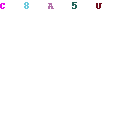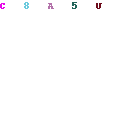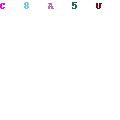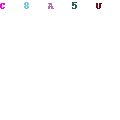CD drive
According to abbreviationfinder, the CD reader, also called a CD player, is the optical device capable of reproducing audio, video, data CDs, etc. using a laser that allows you to read the information on such discs. The compact disc player is composed of:
- A head, in which there is a laser beam emitter, which shoots a beam of light towards the surface of the disk, and which also has a photoreceptor (photo-diode) that receives the light beam that bounces off the surface of the disk. The laser is usually an AlGaAs diode with a wavelength in the air of 780 nm (close to infrared; our vision range reaches approximately 720 nm), so it is a light invisible to the human eye, but not for that reason harmless.. Always avoid looking at a laser beam.
The wavelength inside polycarbonate is a factor of n = 1.55 smaller than in air, that is 500 nm.
- A motor that rotates the compact disc, and another that moves the head radially. With these two mechanisms you have access to the entire disk. The motor takes care of the CLV (constant linear velocity: ‘constant linear speed’), which is the system that adjusts the speed of the motor so that its linear speed is always constant. Thus, when the read head is close to the edge the motor rotates slower than when it is close to the center. This fact makes the construction of the reader very difficult but ensures that the data entry rate to the system is constant. The speed of rotation in this case is controlled by a microcontroller that acts according to the position of the read head to allow random access to the data. The CD-ROMs also allow to maintain the constant angular velocity, the CAV (constant angular velocity: ‘ constant angular velocity ‘). This is important to keep in mind when talking about CD-ROM read speeds.
- A DAC, in the case of CD-Audio, and in almost all CD-ROMs. DAC is Digital to Analogical Converter. In other words, a converter from digital signal to analog signal, which is sent to the speakers. There are also DACs in sound cards, which, for the most part, also have an ADC, which does the reverse process, from analog to digital.
- Other servo systems, such as the one in charge of guiding the laser through the spiral, the one that ensures the precise distance between the disk and the head, so that the laser reaches the disk perfectly, or the one that corrects errors, etc.
Steps followed by the head to read a CD:
- A coherent beam of light (laser) is emitted by an infrared diode towards a mirror that is part of the reading head, which moves linearly along the surface of the disk.
- Light reflected from the mirror passes through a lens and is focused on a point on the surface of the CD.
- This incident light reflects off the aluminum layer, passing through the polycarbonate coating.
The height of the projections (pits) is the same in all and is selected very carefully, so that it is just the wavelength of the laser in the polycarbonate. The idea here is that the light that reaches the plain (land) travel 1/4 + 1/4 = 1/2 of the wavelength (in the figure it is seen that the wave that goes to the zone without overhang half a period ago, bounces and another half period ago, which returns an out-of-phase wave half a period ½ when it goes to the height of the ledge), while when the light bounces off a ledge, the signal bounces with the same phase and period but in the opposite direction. This makes a property of the optical-physics fulfill that says a signal that has a certain frequency can be canceled by another signal with the same frequency, and the same phase but in the opposite direction, for that reason the light does not reach the photoreceptor, it is destroyed at herself.
The value 0 is given to any succession of projections (when the light does not reach the photoreceptor) or non-projections (when the light arrives out of phase ½ period, which has crossed almost without problems the light beam going in the other direction, and has reaching the photoreceptor), and we give the value 1 to the change between salient and non-salient, thus having a binary representation. (Change from light to no light at photoreceptor 1, and continuous light or non-continuous light 0.) 4. The reflected light is routed through a series of lenses and mirrors to a photodetector that collects the amount of reflected light 5. Energy The light source from the photodetector is converted into electrical energy and by means of a simple threshold the detector will decide if the point indicated by the pointer corresponds to a hole (pit) or a plain (land).



